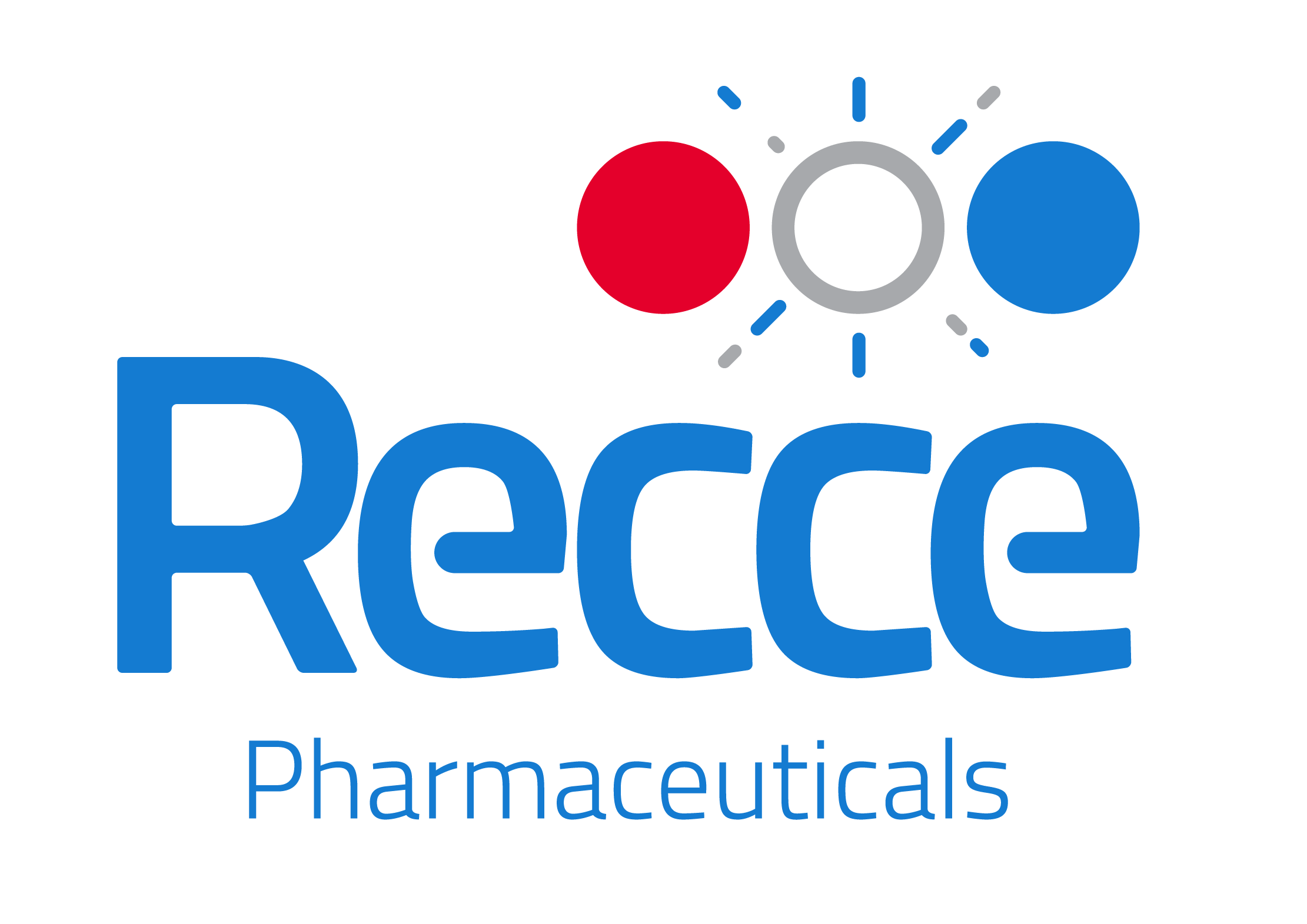SEP.EP.002.Video
Transcripts are auto-generated and may contain errors
Dr. Laura Kahn: [00:00:00] Pet animals do harbor microbes. They have their own microbiome and people live with their animals. They sleep with their animals. They hug and kiss their animals, they share food with their animals. I do all of those things.
Nicole Kupchik: All of those things. Yes, I do all of those things. Absolutely. Yeah. So,
Dr. Laura Kahn: you know, and I’m sure you’re sharing microbes while you’re doing that.
Absolutely. You know, happily and, and. You know, and I’m not
Nicole Kupchik: saying that you shouldn’t. This is the sepsis spectrum, a podcast about antimicrobial resistance, sepsis, and how to expect the unexpected in your practice.
Meet Farmer Braxton going about his daily routine. He notices something strange spreading throughout his livestock. Downriver a carpenter spikes a sudden fever. And on it goes from animals to people. Something’s gone terribly wrong [00:01:00] at first. These might seem like separate stories, but they’re not infectious disease, despite our best efforts.
Doesn’t like to stay in its lane. And the rise of antimicrobial resistance, not just across distances but across species, makes this far more than a human problem. Take salmonella, a pathogen that can slip from livestock to meat, to humans, often carrying resistance. Genes that strip our antibiotics of power and leave us with nothing to fight back.
A tiny threat, but a loud reminder of how connected we really are and what can happen. When we treat infections like isolated events with every misconnection and every siloed response, we don’t just stall progress, we fall behind. We must approach every case as part of our larger system. That framework is exactly what One Health delivers, a unified view that connects human, animal and environmental health and gives us our.
Best shot at stopping a [00:02:00] MR before it’s too late.
Hi everyone and welcome to the sepsis spectrum or as we like to call this season Microbial Mysteries. I’m Nicole Kubic, critical care nurse and clinical nurse specialist and your guide through the complicated and sometimes. Frustrating world of sepsis and antimicrobial resistance. On today’s episode, we’re gonna define the one health concept We’re gonna explore why antimicrobial resistance or a MR is a growing threat within the one health framework.
We’re also gonna identify key health challenges that pop up where human, animal and environmental health overlap, and how we can approach them with shared solutions. We’re gonna see how applying One Health best practices, both locally and globally, can help us stay ahead in the fight against a MR, we’re gonna understand the role of One Health in the prevention, identification, and management of infections and sepsis [00:03:00] across different populations and settings.
And hopefully you’ll walk away with practical ideas you can bring back to your clinic, organization, or community. To support the One Health Approach, strengthen antimicrobial stewardship and help push back against resistance. I’m honored to welcome someone whose work helped launch a global movement and who’s never stopped asking the hard questions about public health.
Dr. Laura Kahn is a powerful voice in public health policy and one of the pioneers of the Global One Health Movement. Her work bridges science, medicine and leadership with a focus on how human, animal and environmental health intersect. She brings deep insight on a MR. Pandemics and how public health systems succeed or fail when the stakes are highest.
Now, here’s the one and only Dr. Laura Khan.[00:04:00]
All right. Welcome to the show, Dr. Laura Khan. Thank you so much. I’m so excited to chat with you today. You have done a lot of work in on the public health side of things. Can you tell us a little bit about One Health.
Dr. Laura Kahn: Sure, I’d be happy to. Well, one, health is a relatively new term, but an ancient concept understood by indigenous peoples around the world, and the concept is that human animal, plant, environmental, and ecosystem health are linked.
Now, that might seem obvious to many, but that’s generally not how, uh, medicine and public health are practiced. So we focus usually just on the humans. Um, so this is a broader perspective, uh, with the goal of [00:05:00] preventing disease, trying to keep people healthy.
Nicole Kupchik: So can you give us an example of that interconnection and how things can go awry?
Dr. Laura Kahn: Well, we can talk about antimicrobial resistance. Um, because that’s kind of the quintessential one health subject. Now, uh, to back up a little bit, we live in a microbial world and our bodies are mostly microbial and, um, and all the plants and animals have their microbiomes for plants. It’s called a phyto.
Phytobiome. And. Uh, the, you know, plants certainly, and we eat, many of us eat animals and their, and their products. So if any that we call food, and if any of these things are contaminated in some way, we get sick. So, um, [00:06:00] so if we eat something that is, makes us sick and we decide to take an antibiotic, let’s say an antibiotic against some sort of bacteria.
That will then, uh, not only affect the microbe that we’re trying to get rid of, but it’s going to also inadvertently, uh, affect the good microbes that inhabit our gut. And we have billions of microbes inhabiting our gut, and they are as important for our health and wellbeing as any of our organs. You know, the, the world we live in is, as I said, is microbial.
You know, we inhale the air and we drink the fluids, and those all have microbes in them. So
Nicole Kupchik: we are surrounded. So what would be the upside and the downside of giving, let’s say our food source like an animal, uh, giving that animal prophylactic antibiotics.
Dr. Laura Kahn: Well, that’s the [00:07:00] controversy and it’s really interesting because inadvertently, I.
Uh, scientists discovered that if you gave give low level antibiotics to food animals, it makes them grow faster. And nobody really figured out why that was. But, uh, it, it was, uh, discovered, um, not that long after, uh, antibiotics were dis, antibiotics were discovered and it occurred around World War I. Now you have to realize during World War II there were food shortages, uh, particularly in Wartorn Europe.
And, uh, farmers were desperate to try to figure out how to, uh, grow food, you know, particularly meat for the soldiers. Uh, and the soldiers would get, um, the prime choice cuts of meat. And the folks back home were getting the lesser meat. So, so meat was at a real premium. And, uh, low [00:08:00] level antibiotics for some reason caused the animals to build muscle and to gain weight.
So it had certainly a food security. Purpose. And at that time, antimicrobial resistance was merely a threat. It wasn’t a reality. But with time, we’ve discovered that it comes with costs, namely antimicrobial resistance. Uh, and so now you know, the, the costs appear to be weighing more than the benefits. On the other hand, in terms of providing antibiotics for an animal that’s sick, well, nobody wants to eat a sick animal, so there’s no question.
Of the importance of giving antimicrobials to animals that are sick. The question is whether the food security needs, uh, are way more than the anti, than the, than needs to preserve our antimicrobials. So it’s a real conundrum. [00:09:00] Uh, and right now, fortunately, you know, we’re not suffering from famine. Uh, but you know, those metrics might change.
So, you know, these are all very delicate issues. Now, I’m certainly not a proponent for giving low-dose an antimicrobials to farm animals because certainly right now, um, you know, the, the problem with antimicrobial resistance greatly outweighs the, uh, problems of food security or insecurity for most people, at least in the United States.
Nicole Kupchik: Yeah. Well, can you give us an example, uh, like just a real life example of how antibiotic resistance can spread when you think about that human animal connection?
Dr. Laura Kahn: Right. Well, uh, a major way it spreads is through fecal matter and, uh, uh, there are over 8 billion humans on the planet. [00:10:00] And over 30 billion terrestrial food animals on the planet, there’s more chickens than there are virtually any other bird, uh, because we eat them.
And, uh, there was this very important paper published by David Barus back in 2018 in Nature Sustainability, calculating that. All the hu billions of humans and their terrestrial food animal, we’re not even including aquaculture. We produce about 4 trillion kilograms of fecal matter each year. And, uh, you know, sanitation systems only are designed to process human waste.
They’re not designed to process animal waste. So in many countries, particularly in developing countries, animals are defecating. Uh, in the environment. Now here in the US we’ve got these large concentrated animal feeding operations that [00:11:00] produces much manure as some midsize towns, and they have these massive manure lagoons that pose, uh, huge threats to the general microbial ses, uh, system in the surrounding communities.
So, um, so fecal matter is a major, major issue, uh, globally, uh, that’s really not being adequately addressed. Let me give you one example. So, uh, there was this one paper that was looking at per capita antibiotic use. Uh, and, um. I, I’m blanking on the author’s name, but surprisingly New Zealand had one of the highest per capita antibiotic use.
Now you think, well, why New Zealand? Well, uh, they didn’t know, but there was another, but when you [00:12:00] looked at Baron, does this paper with the fecal matter? Well, uh, New Zealand has more sheep than people, and those sheep are defecating. You know, there’s no, you know, again, they’re defecating in the environment.
Now, I don’t have any proof, but one could hypothesize that all that fecal matter in the environment contaminating the, uh, pastures that they, that they graze in the waterways, uh, could be contaminating the food sources, potentially aerosolizing, making people sick. And making them reliant on antimicrobials.
You know, why else might they be such high users of antimicrobials? So that’s speculation. There needs to be more research on the environmental component and the impact of all the fecal matter that our terrestrial animals are [00:13:00] producing. And look in countries like India. Most of the humans are openly defecating too.
So they are very microbial dense in their environment, their general ecosystem. And they also have one of the highest uses of antimicrobials as well. They don’t require prescription for their antimicrobials.
[music]: Oh, interesting. Okay. And um,
Dr. Laura Kahn: they have some of the most resistant microbes on the planet. Uh, so they’ve got this, you know, this kind of perfect storm of a dense, fe dense environment, antimicrobials available without a prescription.
They’ve got over a billion people and they’re using, you know, and they’ve got poor sanitation, uh, and they’re using antimicrobials all the time, whenever they feel sick and. Those microbes spread out. They spread through air travel by, [00:14:00] by humans, they spread by birds, by wildlife. So these microbes get around.
Uh, so what happens in one country eventually happens in all countries when we’re talking about, uh, microbial spread and antimicrobial resistance.
Nicole Kupchik: Yeah. You know, it’s, it’s interesting to think about how truly interconnected we are and I think the pandemic five years ago was a great example. You know, I live in Seattle, Washington, which was one of the first cities to have cases, and it was brought to us from, you know, international travel.
Dr. Laura Kahn: Yeah, a absolutely. These microbes are very, very efficient at getting around using power modes of transportation. Uh, certainly.
Nicole Kupchik: We are gonna go to break, and when we come back we’re gonna talk about how we can apply one health best practices, both locally and globally, and how that can help us stay ahead in the fight against antimicrobial resistance.[00:15:00]
Are you a nurse infection, preventionist, or healthcare professional who wants to stay ahead of the curve? Visit sepsis podcast.org to learn how you can receive free nursing CE credits by listening to or watching the sepsis spectrum. It’s our way of supporting you and together better understanding the ever evolving world of sepsis care and a MR.
And now back to the show.
Dr. Kahn, can we talk a little bit about, we’ve been hearing so much in the media about your gut microbiome and how that can change. So can you talk about basically the whole idea of One health and how that might connect to each of us personally when we think about our own gut microbiome?
Dr. Laura Kahn: Sure. Well, the human [00:16:00] microbiome showed us that our bodies, they have more microbial cells than they have human cells.
And, uh, and so we have to think of ourselves as, as, uh, ecosystems, microbial ecosystems. Um, you know, in the, in the 20th century, we thought of ourselves as a, a collection of organs. You know, the heart, the lungs, the kidneys, and that’s how we practice medicine is, you know, dividing specialties according to which organ is being, you know, uh, is the specialty.
Uh, but in the 21st century, thanks to the Human Microbiome Project, uh, we’re discovering that our bodies work in very different ways. They work systemically. Not just, you know, separate organs. And, uh, and so our, our cells are communicating with each other through chemicals or [00:17:00] through electrical signals and the, the microbes on and in our bodies, particularly in our gut, um, they are releasing important chemicals that, uh, communicate with our bodies.
So they’re communicating with each other. That’s really important because they produce a lot of small, uh, chemicals, uh, that, you know, affect our immune system, that affect our endocrine system, uh, affect our satiation. Um, just really powerful interactions that we had not appreciated before. Um, and uh, we’ve also discovered that when you eat.
Um, you know, you’re feeding your gut microbes and, uh, some foods they like better than others. Um, so when you’re eating, you have to think about that. You know, if you wanna be healthy, you have to have healthy gut microbes. What do they [00:18:00] need to be healthy? Well, they need a lot of fiber. They need proteins, you know, all the things that we talk about, you know, for a healthy diet, the things they don’t like is highly refined sugar.
And highly refined foods. They really don’t like those types of foods, which is so common
Nicole Kupchik: in the
Dr. Laura Kahn: American diet. Right. I know. Well, that’s why one of the reasons why the American diet is so unhealthy is because we have a very low fiber, highly processed diet that the gut microbes do not like, and they let us know it.
You know, we’ve got, you know, metabolic people walking around with metabolic syndrome. You know, morbid obesity is a sign of a, uh, disrupted micro, you know, disrupted microbial health. They’re not happy with that. Um, you’re, and, and as a result, you become very unhealthy. Uh, so it, [00:19:00] it’s, you know, very evident then when you, when you, uh.
Eat that kind of diet. We, we know what a healthy diet is, but most people don’t eat it. And sadly, the fruits and the vegetables that are so healthy are also expensive and perishable. And you know, and if you’ve got a lot of food insecurity, people who are struggling to put food on the table where you’re gonna eat the stuff that’s gonna last on shelves for a long time because it’s, it lasts longer and it’s cheaper, but fundamentally it’s not as healthy.
So when I go into the grocery store, I stay on the perimeter because that’s where all the healthy stuff is. You know, the fruits, the vegetables, the dairy, everything’s around the perimeter. You know, you just walk in one end and you go straight to the other. If all the stuff in the middle, that’s all the highly processed stuff.
You just avoid it. Just avoid all the boxed, unhealthy stuff and you stay on the perimeter and you’ll [00:20:00] be in better shape, uh, when you go shopping.
Nicole Kupchik: Yeah, I mean it is. I grew up extremely poor and I will tell you a box of macaroni and cheese. Could feed three of us, you know, for less than a dollar. Whereas buying fruits and fruits and vegetables were definitely a, an extra, it’s, it’s a luxury and that shouldn’t
Dr. Laura Kahn: be the case in our society, but it is.
I mean, you go to, um, developing countries and, you know, you don’t see the boxed foods, or at least, you know, the, some of the, the countries that I’ve been to, they’re eating lots of fruits and vegetables and the level of obesity is much, much less. Uh, you know, so it’s, it’s really a problem in this country that affordable food is the unhealthy food and the healthy food is much more expensive.
So, you know, if, if you want healthy people, you have to reverse that, that has to be a priority that’s gonna impact, you know, [00:21:00] health and wellbeing. And, uh, when you start, um, taking anti antimicrobials and this, let’s talk about antibiotics or just the bacteria, we’re not gonna talk about the viruses. Um, what happens is you start killing, I mean, a lot of these antibiotics are what are called broad spectrum, meaning that they’re gonna affect a large swath of bacteria.
It’s called the shotgun approach. You don’t necessarily know what you’re treating, but you’re hoping that you’re gonna get it. So you prescribe a broad spectrum app antibiotic, hoping that it’s gonna, you know, help the person more than hurt them. Uh, but it inevitably, if they take it long enough, is going to affect the good and the bad.
So you wind up with, uh, an overgrowth, for example, like, um, um. Uh, Clostridium difficile overgrowth. Uh, and then you start getting, you know, [00:22:00] severe diarrhea. Uh, and, and then that just messes up your whole microbiome. So now, now interestingly, getting to the one health angle, um, this was discovered over a hundred years ago by veterinarians.
They found that if they had a horse with diarrhea for whatever reason. If they put a hose in the end in the anus of a healthy horse and plugged the other end of that hose into the sick horse, the fecal matter from the healthy horse would go into the sick horse and it would cure the horse of, you know, of the GI problem it was having.
There was suggestions of doing that in human medicine back in the 1950s. But the, you know, there was a lot of revulsion in the thought of, of fecal transplantation in that way. Well now, in the 21st century with, you know, the odd advent of [00:23:00] severe antimicrobial resistance, we’re now seeing fecal transplants as a form of therapy that is often quite effective, uh, in treating some of these, uh, you know.
Dysbiotic conditions. It’s called dysbiosis.
Nicole Kupchik: Yeah. Well, I’ve been able to actually administer those. Oh, really? At the bedside, so, oh yeah, absolutely. For C patients with resistant c diff. Yeah. Um. Yeah. Or recurrent, I should say c diff. That is one of our things we go to. And so luckily now it comes in capsules, which, oh, that’s much better.
Yeah. At the bedside we’ve kind of nicknamed them craps. But I will say this is, if I had c diff, I would take it in a heartbeat. Oh,
Dr. Laura Kahn: I would much rather have a crap.
Than an antibiotic to treat my c tiff. It’s, you know, it’s, it’s much safer than, you know, than anything else. So, so, yeah. So, so now this is an example of [00:24:00] using a micro, using microbes to treat a, you know, a dysbiotic condition.
And I have argued that we need to rethink primary care because as I said earlier. Our body’s just not a system of separate organ systems. Our body is, you know, microbial systems and hormonal and electrochemical systems. And, and so I, I would, you know, right now the way we assess health is we take blood specimens or you know, we draw blood and we assess how good, how well functioning our specific organs are working.
We’re not assessing the composition of the microbiome in our body. We’re not assessing whether or not our microbiomes are working well. So it’s a very different mindset rather than, [00:25:00] and by the time you pick up abnormalities in your specific organs, you’re already far down the path of disease. We could push that upstream because dysbiosis appears to occur much earlier in the disease process before the organs start functioning poorly, like the kidneys, for example.
Really important. There have been studies showing that dysbiosis can sometimes pre predate kidney malfunction.
Nicole Kupchik: Interesting. I never thought of it that way, huh? Yeah.
Dr. Laura Kahn: So I would like to envision, you know, a future of primary care using a one health model whereby we do systemic both on the skin and gut microbe microbiome analysis to see, you know, what is the composition of your microbial ecosystem.
You know, is there [00:26:00] evidence of dysbiosis and that would, you know, be. Um, developed on a range of people seeing, you know, what, you know, what are the healthy microbiomes and what are unhealthy microbiomes and where are you in that spectrum. Uh, so when you would go to a primary care doctor, they would assess that.
So they would assess your microbiome and then they would assess your exposures, uh, to different chemicals in the environment. Now, I think of an environment I. As the abiotic aspect of, you know, an area. So the soil, the water, the air, if you’re breathing, polluted air. If you’re drinking polluted water or contaminated water, that’s part of the environment.
The ecosystem is the microbial component, whether you’re not, you’re eating contaminated plants or animals, um, you know, that’s part of the. Your [00:27:00] microbial exposure. And also you can inhale, contaminated, microbially, contaminated air. There could be, you know, flu virus or measles virus or COVID virus floating around that you inadvertently inhale.
And that’s going to then affect, you know, your, your health. So, you know, we don’t live in a.
Nicole Kupchik: So, Dr. Cotton, I wanted to ask you how, like, practically, how would a primary care provider assess the microbiome in a patient? So you’re saying we, we could do this proactively, but how would that be done practically?
Dr. Laura Kahn: Well, a lot of fecal specimens, um, you know, you could either, you know, just have somebody there. Uh, there’s being develop these toilets. That can assess your health through your urine and through your fecal matter. And just imagine how easy that would be to [00:28:00] collect your health data by just going to the toilet, uh, rather than having to go and get your blood drawn.
I mean, I’m not saying that we should eliminate blood draws, but for more up to date health monitoring, uh, the toilet would be a really effective way to collect that information.
Nicole Kupchik: And are there labs that are assessing these types of things now or
Dr. Laura Kahn: it’s still rather experimental? Um, I know that there are, there are, uh, efforts in place to develop diagnostic toilets.
Um, I think that’s more in Europe than in the us. I. But there are certainly efforts underway. There’s also efforts for menstrual
Nicole Kupchik: blood. Well, even with COVID, a lot of cities were, and counties across the country, they were using waste monitoring.
Dr. Laura Kahn: Yeah, that’s right. Wastewater, uh, surveillance, which is very effective because you’ll pick up signals [00:29:00] much earlier than when people start feeling sick and present.
They may or may not present to their healthcare provider. Here, uh, you know, you have, I mean, uh, you would have to have a monitor in the individual toilet for individual care. For public health monitoring. Wastewater surveillance is very effective. Yes. And, and that has been used to grade success in picking up signals very early on.
Nicole Kupchik: So if care providers, healthcare providers. A few points that they could really take away and implement into their practice. Let’s start with primary care providers. What would those points be like? What could they do now that could be more proactive to this whole concept of One Health?
Dr. Laura Kahn: Well, one would be to assess, uh, their patients’ exposures, uh, whether or not they live [00:30:00] with a pet.
Because pet animals do harbor microbes. They have their own microbiome, and people live with their animals. They sleep with their animals. They hug and kiss their animals. They share food with their animals. They sleep with their animals. So we’re sharing our, I do all of those things.
All of those things.
Yes, I
Nicole Kupchik: do all of those things. Absolutely. Yeah.
Dr. Laura Kahn: So, you know, and I’m sure you’re sharing microbes while you’re doing that. Absolutely. You know, happily. And, and you know, and I’m not saying that you shouldn’t, but,
uh, you know, for some people there are greater risks than for other PE if you are immunosuppressed for whatever reason, and even if you’re, let’s say you’re pregnant.
Pregnancy is an inherently immunosuppressive state. You have to be immunosuppressed so you do not reject the fetus. So, uh, people who are pregnant are more vulnerable to the risks of a [00:31:00] zoonotic or a, a microbe from your animal to make you sick. Toxoplasmosis, for example, is one case. Point. Um, you know, but you know, these companion animals, they harbor methicillin resistant staph aureus.
Uh, they can, you know, on their skin, um, they can, you know, they have, uh, ampicillin resistant, uh, enterococcus, feum. They harbor these microbes that you could inadvertently get on you in you. So developing a relationship with a veterinarian. If you have a patient who has heightened risk, particularly find out if they have a pet, find out who the pet’s veterinarian is, and then make sure that that pet is not harboring a harmful microbe that could get to your patient.
So, you know, there must be greater communication and collaboration. [00:32:00] Physicians who take care of their human patients and the veterinarians who take care of the animal patients to make sure that, you know, zoonotic transmissions kept to a minimum. Because there have been cases where people do get sick and potentially die from the inadvertent exposure of their pet’s microbes, either from, you know, from their bodily fluids or from their, you know, uh, from their, uh, fecal matter urine, whatever.
So, so that’s number one in terms of primary care. Um, number two is, you know, uh, health and nutrition. Nutrition is generally not taught in medical school. Maybe an hour’s devoted to it, uh, very little. And, you know, usually it’s delegated to a nutritionist, which is fine, but it needs to come from the doctor too, to reinforce that kind of message.[00:33:00]
And I don’t think people quite understand why they have to eat fruits and vegetables. You know, it’s more, as I said, it’s more expensive. Usually it, it requires more preparation time. So why do they have to eat fruits and vegetables? Well, maybe if they had a better understanding of, you know, of why that impacts their health more than just, it’s good for you.
Um. Play a role, changing the culture a bit and avoiding some of these really highly processed, unhealthy foods that everybody’s eating and getting sick off of. Um, so, and you know, it would be nice to be able to say, you know, we need to be able to diagnose the microbiome better, but we’re not there yet, scientifically or medically to provide that in a clinical setting.
There needs to be a lot more research into, you know, what exactly are we looking for? What exactly is a healthy microbiome? And we might have to look [00:34:00] outside the United States for people with really healthy microbiomes. Um, then you know what, we can here, but you know, right now, uh, the NIH funding is being slashed.
So, uh, so that’s not a good situation. Uh, if we wanna improve health and wellbeing and healthy microbiomes.
Nicole Kupchik: So, okay. One last closing thought. So this would be, this could be applicable to anyone and everyone listening. We’re going to the grocery store, you and I. All right. You said we’re gonna shop the outer perimeter.
Is there anything extra that we’re throwing in the cart to keep ourselves healthy?
Dr. Laura Kahn: Yeah. Well, uh, probiotics like yogurt, uh, some of the healthiest foods are fermented. So they microbes really like fermented food. So sauerkraut, kimchi, I’m Polish.
Nicole Kupchik: I’m a big sauerkraut girl. Well, good for you. Eat it up. I love it.
Okay. Alright. Good to know. Alright, what [00:35:00] else?
Dr. Laura Kahn: You know, fermented anything is generally the, the, the microbes love fermented food. Uh, and so yogurt and, and all of that is very healthy. Uh, you know, the cruciferous fit vegetables, um, you know, different fruits offer, you know, different, uh, nutrients, certainly and fat.
You know, fat’s gotten a bad wrap, but it depends on the type of fat. And if you want liquid fat, fat that’s liquid at room temperature, olive oil. It’s a very healthy, fat, uh, fish oil. So you want fatty fishes, uh, like salmon. It’s a healthy fat. Um, those are really important for benefiting health for brain health too.
Uh, so omega, the Omega-3 fatty acids are, are very healthy. There was a very interesting, um, uh, study done. [00:36:00] Uh, by the National Geographic. Uh, a number of years ago, they sent a, uh, reporter Dan Butner to the areas, to the regions of the world where the people live the longest. And that was called The Blue Zones.
Nicole Kupchik: Have you heard of that? Yes, I have. And we have one major blue zone in the US
Dr. Laura Kahn: That’s right. Loma Linda. Uh, they’re largely, uh, vegetarian. But, you know, so these, these blue zones, they don’t all eat the same diet, uh, but there are commonalities, uh, in them. You know, they, they, meat is sparing. It’s primarily fruits and vegetables, very colorful fruits and vegetables.
And, um, you know, they ha uh, aria Greece and Sardinia, Italy. They drink a little bit of red wine. Again, nothing in excess. Uh, a lot of walking and a lot of, um, [00:37:00] uh, getting together with family and friends and, you know, communal eating is important. Um, all, all of these factors lead to, uh,
Nicole Kupchik: health, uh. Well, Dr.
Kahan, I wanna thank you for being here today. You have been so interesting to talk to and I had no idea. We talk so much about poo, but it’s important, right?
Dr. Laura Kahn: It’s absolutely important. Absolutely. Abs, you know that that is a sign of, of, of health. We need to talk about it more.
Nicole Kupchik: Well, thank you so much for being here today.
I really appreciate you sharing your
Dr. Laura Kahn: expertise. My pleasure, my pleasure. Thank you, Nicole. It was a pleasure talking with you.
Nicole Kupchik: Well, that was an interesting episode. I honestly didn’t realize we’d be talking about how important analyzing our boo is. And all I could think is we are living in a microbial world and I am a microbial girl. [00:38:00] No, but to be seriously though, um, I truly was. Uh, pretty enlightened on, um, just our, how important our microbiomes are and the interaction between humans and animals, and it’s all kind of coming together and making a lot more sense.
So, just a gigantic thank you to Dr. Laura Kahn and all the work she has done. And, you know, if you haven’t read her book, uh, check out her book and you can also follow her@lauracon.com. I just wanna thank everyone for joining me today on today’s episode of the Sepsis. Spectrum. If you like the show, we wanna hear about it.
Please leave a review wherever you are enjoying this podcast. It helps a ton. You can also reach me and our awesome team@infoatsepsis.org or visit sepsis podcast.org to share any stories of your own, any questions, concerns, or episode ideas episode. To learn more about Sepsis Alliance, visit Sep. Dot org.
The sepsis spectrum is brought to you by Sepsis Alliance. I’m your host, Nicole Kch. Our executive [00:39:00] producers are Alison Strickland, Hannah sas, Claudia Orth, and Alex Colvin. Our producers are Aaron Corny, Rob Goldman, Chante Brook, and me Nicole Kch. Our post-production producer is Tim Scott. Our editor and engineer is Jason Portizo.
Our music is by Omer Ben-Zvi to learn about sepsis alliances. Podcast legal disclaimer and compliance policies. You can visit sepsis podcast.org/disclaimers. The sepsis spectrum is a human content and sepsis alliance production.
Thanks for watching. I hope you’re enjoying the sepsis spectrum. Leave a comment below and let me know if you want to binge some more episodes. Just click that playlist right over there and if you’re feeling super generous today, give this video a like, subscribe if you haven’t hit the bell. All the things.
And of course you can also listen on the go wherever you get your [00:40:00] podcast. Bye.































